We use cookies to make your experience better. To comply with the new e-Privacy directive, we need to ask for your consent to set the cookies. Learn more.
Glossary
Acrylic


Plastic type of material, often with trade names e.g. Perspex, Plexiglas and Oroglass. Used as alternative to glass. HSS cutters are recommended to machine this material for a superior finish.
Aperture


An opening in a material or router base.
Arbor


A spindle onto which a variety of slotting, slitting and grooving cutters can be mounted along with various spacers and a locking nut. A ball bearing may also slide on the spindle to act as a guide as an alternative to a side fence.
Architrave


A moulded framework surround for doors, archways, etc. Architraves can be machined with a router or spindle moulder.
Armature


Found on commutator (Carbon brush) motors. Includes the rotor, windings and commutator. In a router, the armature has a thread on one end which holds the collet and nut assembly.
Arris


A sharp edge produced where two surfaces meet at an angle.
Back Cutting


The process of cutting in the opposite direction to the rotation of the cutter. Back-cutting should be avoided, a notable exception being the use of a suitably constructed jig, for example a dovetailing jig.
Back Fence


A back-fence is a 90 degree surface on a router table against which the timber is passed to keep it in an exact position relative to the cutter.
Barley Twist Moulding


A spiral pattern resembling a twisted rope. This type of turning can only be produced easily with the Trend Router lathe.
Barrel Moulding


A moulding with a convex or bellied profile. Also called a 'pulvenated' moulding.
Batten


Any straight-edged piece of timber used as a guide against which the router or portable saw passes
Bead


A small rounded (convex) profile or moulding. Available in numerous variations and sizes.
Beam Trammel


A straight bar with a pivot point onto which the router is mounted to cut curves and circles.
Bevel Edge


An angle applied from top to bottom of a piece of material.
Biscuit Dowel


These are dowels compressed in the form of an oval biscuit with roughened surfaces to give a key for PVA glue to adhere to.
Biscuit Jointing


Means of jointing timber and composite boards using dowels shaped like oval biscuits. Special ´biscuit´ jointing power tools are available but the techniques are easily carried out using a conventional router.
Bit


Term used in the USA and sometimes in the UK, meaning a router cutter (all grades). Available in straight form, helical shaped, or with a multitude of mould profiles.
Blockboard


A board made from cores of timber bonded together and covered with veneer on both sides.
Bolection


A raised and rebated moulding which projects beyond the face of the frame into which it is inserted.
Bottom Cut


A straight bit with cutting edges on the end to allow plunge cutting.
Box Corner Joint


Another term for a comb joint. Grooves for comb-jointing are usually cut by a series of stacked groovers mounted on an arbor. Box corner joints can also be produced with a straight router cutter in conjunction with a suitable jig.
Box Jig


A guiding device which involves the workpiece being held within a box structure for machining or drilling to a pattern.
Brazing


A form of welding that secures a carbide cutting edge to the steel body of a router cutter.
Break-out


Term used for describing the splitting out of the edge of material being machined.
Bridle Joint


A joint similar to a mortise and tenon but with the positions of the mortise and tenon reversed.
Built-up Cornice


A cornice produced by joining several sections together.
Built-up Timber


This refers to timber which has been jointed from smaller sections.
Burning


This occurs generally when routing at too slow a feed rate, taking too deep a cut, or when the non-cutting part of the tool is rubbing the workpiece. It can also indicate that a router cutter may need resharpening.
Burrs


Small multi-fluted rasps used for deburring, cleaning welds and woodcarving. Normally used in portable hand grinders or light duty hand routers.
Butt Joint


A joint made when two pieces of wood are joined together with no overlap, shoulders, or tenons.
Cam Clamp


The process of cutting in the opposite direction to the rotation of the cutter. Back-cutting should be avoided, a notable exception being the use of a suitably constructed jig, for example, a dovetailing jig.
Cambrio


A particular arched shape formed on the top of raised panel doors.
Capillary Cutter


A cutter which produces a radiused groove in window and door joinery, for the purpose of draining off water.
Carbide (Tungsten Carbide)
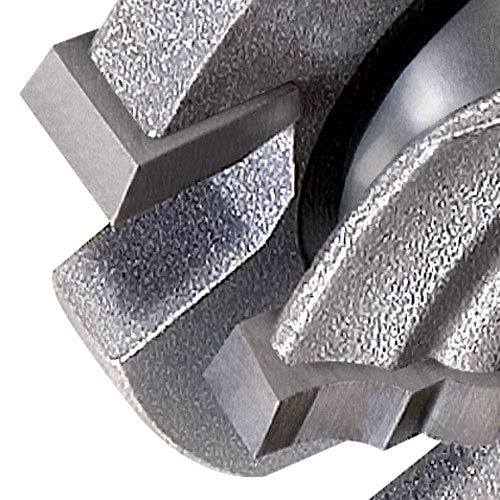

A very hard and durable compound used to make router cutters. This is either brazed onto steel shoulders or produced as an integral solid carbide cutter. Carbide requires careful handling and storage as it can be brittle.
Carbon Brushes


Found in a commutator motor. The brushes feed current to the windings on the rotor and bear on the metal segments (commutator) on the rotor.
Carbon Steel


Used for twist drills and machine bit. Has 0.6 to 1.8 % carbon content. Abbreviated as WS.
Carcass


The body part of a box-like piece of furniture without the doors and fittings.
Casement


A glazed frame or sash which is either hinged or pivoted.
Cavetto


A quarter-round concave moulding, with a quirk shoulder.
Chamfer


A corner that is angled so that the edge of the material is removed equally on each face.
Chatter Marks


A series of ripples left on the cut surface caused by feeding too fast or using a blunt cutter.
Cheek


A strip of timber or plastic often used to extend the bearing surface of a fence to prevent router or timber running off course when feeding-in.
Chip Limiting


The space between the surface of the cut and the bit body that controls the size of the cut and the speed of feeding.
Chipboard


Manmade wood particle board used in cupboards and shelf units, usually faced with a veneer, plastic laminate or melamine foil. TCT cutters should be used with this abrasive material.
Chuck


Usually refers to the holding device at the end of a power drill or lathe. Serves a similar purpose to that of a collet on a router.
Clearance Angle


The angle of the cutter edge relative to the body of the bit.
CNC


Computer Numerical Control - the technique where a cutting head such as a router is controlled by a computer through a program defining the cutting path to be followed.
Collet


A chuck or gripping device which fits on the end of a routing machine spindle to hold the shank of the cutters (concentric).
Collet Capacity


The size of cutter shank that will fit a particular collet. Common sizes are 1/4", 3/8", 1/2", 8mm and 12mm.
Collet Nut


The hexagonal nut that retains the collet in place on the spindle of a router.
Comb Joint


A joint usually consisting of parallel cut fingers which interlock. Often called a corner box joint.
Combination Cutter


A cutter which can perform more than one profiling or shaping operation, usually by applying it at different depths and angles.
Concentric


One or more circles within each other, having the same centre point.
Contour


The profile or section of a moulding, denoting shape and size.
Copy Router


A router which has the facility to cut or profile when working from a template or guide.
Core Box


A groove with a rounded concave bottom. A core box cutter is often termed a radius cutter or a veining bit.
Corian


A 'marble-like' material with a dense structure used in luxury kitchens and bathrooms. Can be cut to a wide variety of shapes and designs with router cutters. (Corian is a trademark of Du Pont). Classed as a composite worktop and is acrylic based and bonded to a MDF core. Other composite board brands include Avonite, Apollo Quicktops, Apollo Magna, Apollo Slab, Maia, Earthstone, Minerva, Hanex, Hi-Macs and Staron. Some brands may be bonded to a chipboard core.
Counterboring


A method of recessing the head of a screw or bolt into material. Tools which drill and cut the recess simultaneously are called counterborers.
Countersinks


Similar to counterboring, but these tools cut countersink recesses to receive bolts and screws with countersunk heads.
Cove


A quarter round concave moulding, normally produced by a radius cutter, used for edging purposes.
Cramp


A piece of equipment for squeezing together pieces of material. Also known as ´clamp´.
Cutter Blocks


Usually refers to the main body of a spindle cutter head into which cutters are inserted and locked. The term is also used to refer to the body of router cutters which have replaceable cutting edges.
Cutter Creep


Movement of the cutter shank within the collet during use, caused by insufficient tightening or collet wear.
Cutting Diameter


The maximum width of the path made by any router cutter in one pass.
Cutting lengh


The maximum length of the full cutting edge of a router cutter.
"Dead Man" Switch


On/off switch without a lock so it must be held "on" at all times when using the router.
Dado


Square or rectangular recessed channels cut into a wood surface against the grain of the wood.
Depth Gauge


A means of limiting the amount of plunge on the router to cut to a predetermined depth.
Depth of Cut


Length of cutting edge of a router cutter or, depending on how the cutter is set-up in the router, the depth of cut the tool has been set-up to produce.
Depth Stop


A device on a routing machine which is adjusted to set the depth of cut the Plunge action will reach.
Dial Gauge


An engineering tool designed to make minute adjustments.
Disposable Tip Cutter


A type of cutter used in industrial or heavier duty applications. The tips of the cutter can be removed when blunt and replaced with new ones. This type of tooling can increase productivity by reducing down time on CNC machines.
Dovetail


A joint in which one part is tapered in shape (the "dove's tail") and fits in a socket shaped to correspond. As a result of its design, it produces a strong joint to resists any outward pull. A strong reliable means of jointing timber.
Dowel


A headless pin of wood used with an adhesive, to hold a joint together.
Dowel Drilling Bits


Accurately sized cutters for drilling holes to receive dowels. Also used for cutting holes to receive plugs. For use in Plunge routers or drilling machines. Often called lip and spur bits.
Dowelling Jig


A jig enabling a series of exactly spaced holes to be bored accurately in both members to be joined. Specially useful for dowelling door frames, mitres, and similar work. Can usually be used with a Plunge router or power drill.
Drop Leaf Table


Sometimes called a ´flag table´, drop leaf tables use a rule joint system for hinging. This involves routing an ovolo mould on a table with a radius profile on the leaf to match.
Eccentric


One or more circles within each other not having the same centre point.
Eccentric Chuck


Chuck to hold eccentric router cutters. The chuck has a hole which is bored off centre.
Eccentric Cutter


Cutters which cut 'off centre' with cutting edge being proud of the body, giving a larger cutting diameter
Edge Planing


Using a straight cutter to remove the complete edge of the workpiece. This can be achieved with a guide batten, template with guide bush or backfence/sidefence with outfeed fence paired to the thickness of the material removed.
Edge Trimming


Cutting back the edge of a workpiece or overlay to a pre-determined size.
Edging


Length of solid wood used to edge composite boards, such as plywood, chipboard and MDF to give an attractive appearance and provide a stronger fixing base for screws, etc.
Electronic


Referring to the current generation of routers which have a variable speed motor (8000-25000rpm) for soft start, and speed selection for different diameter cutters (the larger the diameter the slower the speed). Full wave electronics prevent any drop-off in speed underload so ensuring an accurate finish.
Ellipse


The technical description is 'the cross section of a cone at any angle other than at right angles with the axis'. Ellipse routing jigs are available for fitting to portable routers.
End Grain


The view of an end grain, as seen when timber is cut approximately 90° to the grain direction (traverse).
Escutcheon Plate


A metal plate around a keyhole, which protects the surrounding surface; or the metal lining of the keyhole itself.
Face Edge


This is the 'master edge' from which other measurement and markings are made. The face edge must be planed and finished absolutely square
Face Side


A back-fence is a 90 degree surface on a router table against which the timber is passed to keep it in an exact position relative to the cutter.The surface of a flat, planed piece of timber that is used for the first marks and measurements, and from which all other measurements are taken.
False Base


This is usually a sub-base or adjustable base fitted to a router or jig to support it or guide it.
False Fence


An additional thin fence made from hardwood or plastic, which is Fixed to the metal face of the fence on a router table either to prevent splintering-out (break-out) or to give more support when machining long lengths of board.
Feather Edge


The end of a section of wood cut to a wedge, or tapered point.
Featherboard


A special holding device designed to push the work up against the fence on a router table.
Feed Direction


The direction in which the router is moved in relation to the grain of the workpiece. On a router table, the direction in which the workpiece is advanced in relation to the rotation of the bit. (This should always be opposite).
Feed Rate


The speed at which the router is advanced by the operator. When the router is Fixed, it is the speed at which the timber is fed.
Fielded Panel


A decorative panel used in a framework or door. It consists of a panel with a wide chamfered rebate worked around the edges. Often a small moulding is worked at the inner side of the rebate. The cross grain should be worked first.
Fillet


A small strip of wood used to support shelves, but also loosely applied to a narrow strip of timber fastened to the surface of the workpiece to act as a fence when the router is working beyond the capacity of its own fence.
Fine Adjuster


Most Plunge routers have a feed in device for the fine feeding of the router head or side fence.
Fine Height Adjuster


A screw mechanism allowing you to make precise adjustments to the cutter height.
Finger Joint


A joint made up of a series of equally spaced projections on edges of both pieces of material that interconnect.
Fixed Head Routing


The router is mounted in a Fixed position, either above or below the worktable.
Fixed-base Router


A router that remains in one Fixed vertical position throughout the operation. A Plunge router fully compressed and locked serves the same purpose.
Flute


A straight or spiral groove behind the cutting edge of a router cutter that permits the chips to be expelled from the cut. Good fluting is necessary to clear the chips efficiently.
Forstner Bit


A special bit which is guided by its circular rim rather than its centre point. The advantage of this tool is that it bores a neat, cleanly-cut hole with a flat bottom, its centre point serves only to ensure accuracy for the starting cut. Not for use with abrasive materials unless TCT grade is used.
Frame Jig


A device for guiding a router along or within a frame of narrow battens. Usually adjustable to accept different size workpieces.
Framing


An assembly of pieces serving as an enclosure or a support for a decorative skin.
G-clamps


G shaped clamp made from solid metal, with screw thread turn handle.
G-Codes


The ISO standard control codes for cnc. For example G01 X50 Y50 is a straight line movement 50 mm diagonally from the origin.
Gemstone Eco worktop


Gemstone is made of 85% recycled material including glass and shell, the solid upper surface is extremely abrasive and requires diamond tools to cut it. A conventional TCT cutter will not cut the top surface. Specialist Polycrystalline Diamond (PCD) tooling is required.
Glazing Bar


Bar with two rebates to hold glass at each side, and usually but not invariably moulded. Used widely in windows and glazed doors etc.
Glazing Bead


Small wood bead used to hold a glass pane in its rebate.
Glue Gun


A hot-melt glue method. Instant bonding, ideal for temporary bonds, eg. fixing work to bench, etc.
Gripper Clamps


Term for quick-action sliding clamps used in woodworking.
Groove


Recessed channel, usually of rectangular section, intended to receive a panel, sliding door, or part of a joint such as a tongue.
Grounding


Removing the background of a design which has to be carved. It is advisable to use a two flute straight cutter of diameter of about 25mm for bulk removal, and then a suitable smaller diameter cutter for the intricate parts of the carving.
Guide Bush


A round ring or bush which is mounted on the base of a router, with a space for the cutter to pass through it. It acts as a guidance device for following templates and board edges.
Guide Fence


A guide fence is a ledge against which timber is passed to keep it on an even path.
Guide Pattern


Sometimes called a ´flag table´, drop leaf tables use a rule joint system for hinging. This involves routing an ovolo mould on a table with a radius profile on the leaf to match.A template of some sort that guides the router to form a particular shape, used in conjunction with a bearing guided cutter or guide bush.
Halving Joint


Joint where both halves of wood joined together are of equal thickness, used for framing.
Hardwood


Deciduous trees generally give hardwood. Note that certain hardwoods do not necessarily have a hard consistency.
Haunched


The small projection left by reducing the width of a tenon
Heartwood


The more durable wood (although this varies according to age and type) from the centre of the tree. The dead wood as opposed to the sapwood, which is the growing wood close to the bark of the tree and which carries the sap.
High Speed Steel (HSS)


Hardened and treated high carbon content steel used to make router cutters giving maximum sharpness. Suitable for non-abrasive materials.
Hones and Honing


Hones come in many shapes and sizes and in a variety of materials. They are usually applied for honing or touching-up (sharpening) cutting tools, chisels, etc.
Horizontal Routing


Using the router mounted horizontally in a special table or guiding jig.
Housing


A wide trench cut along the grain to house a shelf or similar, also called a 'dado'.
Inlay


A piece of wood, metal or other material glued into a pre-cut groove or hollow and smoothed flush with the surrounding surface; to insert such a piece.
Intumescent Strip


Intumescent Strip and smoke seal systems provide fire barriers around doors and windows. Specially designed Router cutters are available to recess the strips into timber frames.
Jigs


A general term for devices used as a holding and guiding mechanism for a router.
Kerf


The thickness of cut made by a saw or a slotting tool such as a biscuit jointer router cutter. The terms is also used to refer to the thickess of the blade of the tool.
Keyhole Cutter


A router cutter that produces a special slotted groove on the backs of picture frames, etc allowing objects to be wall hung.
Knot


A very hard mass in a piece of timber formed at the junction of a branch. There are two kinds of knot: the ´dead´ knot which is loose and generally falls out, and the ´live´ knot which is firmly a part of the wood.
Laminate Trim Cutter


A router cutter for trimming plastic laminate which trims the overlay or vertical mounted edge strip.
Lap Joint


A joint where one piece overlaps another.
Ledged and Braced Doors


Consist of vertical boards and horizontal bars or ledges strengthened by diagonal braces
Man-made Material


Reconstituted materials such as MDF, chipboard, blockboard and plywood.
MDF


Medium Density Fibreboard. A versatile man-made board used widely in the woodworking industry. It is smoother than hardboard and denser than chipboard. It has excellent machining characteristics when cut with a router. MDF boards may be veneered or laminated.
Mitre


The joining together of two pieces of wood usually but not necessarily 45 degree . A picture frame is a typical example.
Mortise


A rectangular hole or slot cut into wood that will receive another member (called a tenon) to make a right-angle joint, or to receive ironmongery such as a lock. Tenon length equals mortise depth, tenon width equals mortise length and tenon thickness equals mortise width.
Moulding


A wood surface profile, or a narrow strip that is principally used for decoration. A wide range of moulding cutters are available.
Multi-boring Machine


A drilling machine capable of boring many holes in one operation in a piece of timber.
Multi-fluted rasps


Small multi-fluted rasps used for deburring, cleaning welds, and woodcarving. Normally used in portable hand grinders or light-duty hand routers.
Muntin


Vertical division between the rails in a door or paneling. For windows muntin refers to very small strips of wood or metal that divide a sash into smaller glass panes or lights.
Non-ferrous Metals


Softer metals that do not contain iron, such as brass and aluminium.
Ogee


This cutting profile term has architectural origins. It is a moulding having two curves which impart a wave like profile formed by one convex and one concave curve.
Oilstone


A stone on which oil is applied for touching up cutting tools to hone them.
Ovolo


This moulding has a convex surface (as opposed to a cavetto) formed from a quarter of a circle or ellipse
Panel


A board set in a frame, it can either be below, or above, or flush with, the face of the frame itself. Normally seen in panelled doors and furniture.
Panel door


A door made up from a jointed frame and a seperate panel usually trapped within a groove within the frame.
Pass


In routing, it means one run of the router through the work. Several shallow passes of the router give a better finish than one deep one.
Pattern


A shaped form used as a guide for repetitive cutting or marking out.
Peninsular Tops


Kitchen worktops that are accessible from three sides like a breakfast bar.
Peripheral Speed


The speed of rotation at the extremity of the cutter tip. The distance a given point on the perimeter of a rotating circular object travels, expressed in feet or metres per second.
Pierce and Trim


A single cutter designed to cut through a laminate overlay and then trim it back to the underlying shape.
Pitch


The ratio of rise to going in a roof or stairs which forms the pitch line.
Plastazote (and Esterzote)


Dense foam compounds often used for packaging and in instrument cases. Good characteristics for machining with a router with sharp high speed steel tools providing the best quality of finish.
Plunge


The Plunge action of lowering the router cutter into the work. The feature of most modern routers is spring loaded columns for safe vertical movement with the power on.
Plunge Lock


The mechanism for quickly securing the plunge router down at a set depth.
PPE


PPE is Personal Protective Equipment and includes safety goggles, ear defenders and respiratory protection, as well as other equipment such as protective clothing and foot wear
PTFE


Polytetrafluoroethylene. A dry lubricant, usually a spray, ideal for use on router bit shanks and collets.
PVA


Polyvinyl acetate glue. The most popular modern adhesive for woodworking. It dries under pressure in about two hours at 60Á fahrenheit. Not a good gap filler. Relies on good surface-to-surface contact to produce a good joints.
PVC


Poly vinyl chloride, a type of plastic material.
Quirk


A step or flat area created with an ovolo cutter adjacent to the radius. This is often achieved by using a small bearing with an ovolo cutter. A larger bearing typically would not create the quirk giving only the radius.
Rabbet / Rebate Cutter
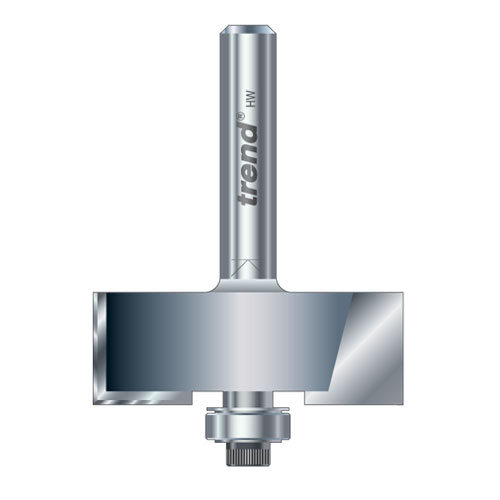

A cutter for forming a recess on material, normally bearing guided.
Radial Arm Routing
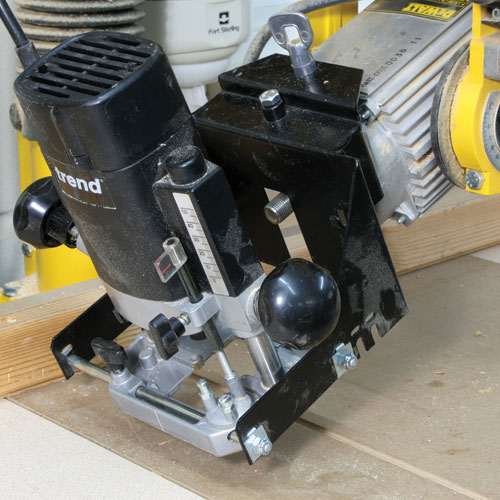

Using a special bracket to attach the router to a radial arm saw to effectively form an overhead stand.
Radial Relief
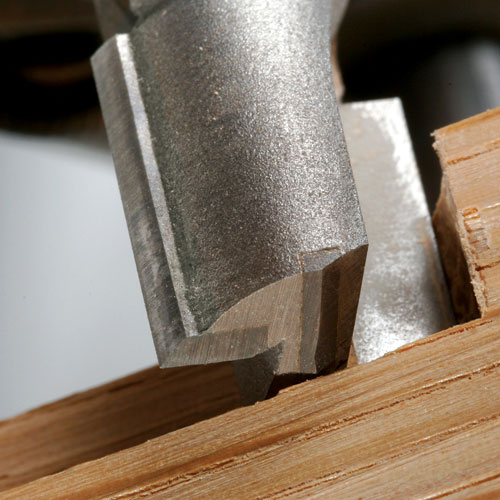

The amount of clearance behind the cutting edge of a cutter that prevents friction between the bit and the timber surface.
Radius
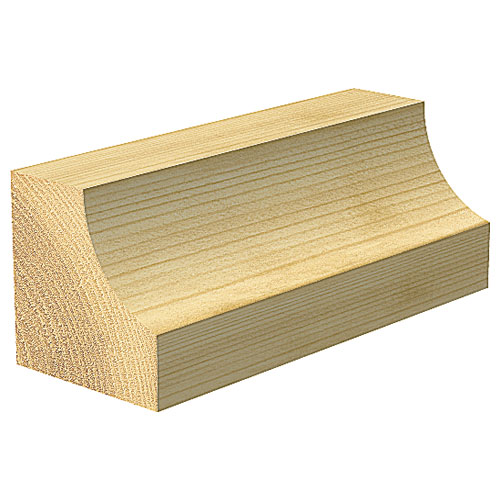

Radius of a circle (half the diameter). Radius cutters produce part or half circular concave profiles.
Rail
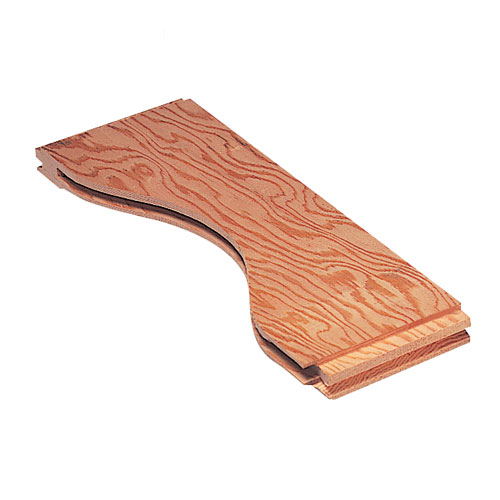

The horizontal member of a door, table carcass, or a chair frame.
Rate of Feed
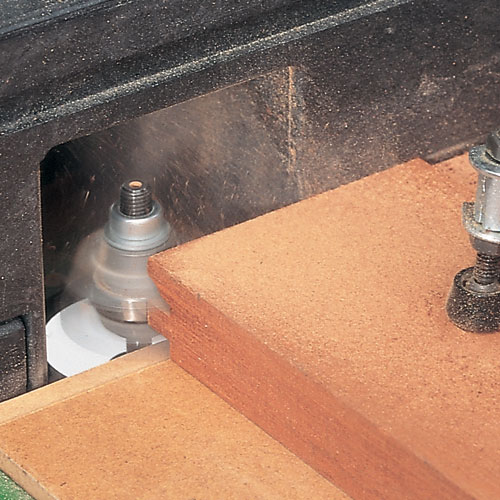

The speed at which the cutter travels across the wood, either by feeding the router into the wood, or feeding the wood into the cutter.
Re-honed
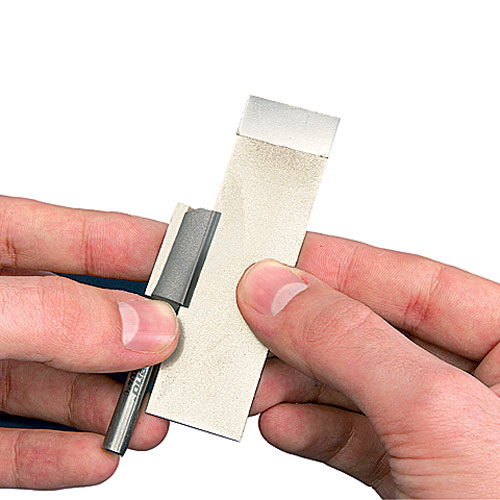

Rubbed with a sharpening stone to restore the cutting edge.
Replaceable Tips
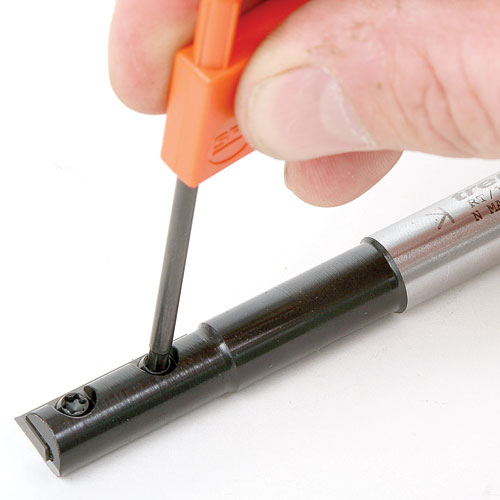

TCT cutting blades held on to a cutter with locking screws so that they can be changed when blunt.
Riser
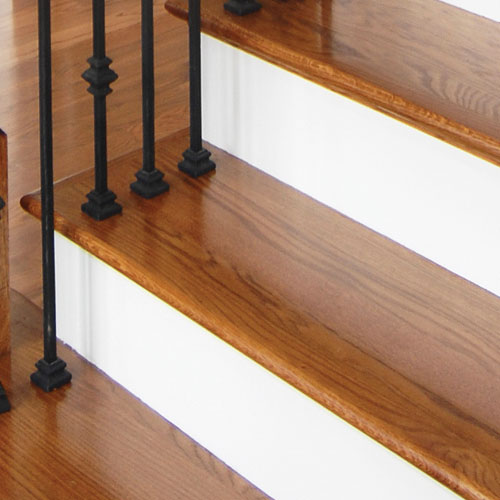

The vertical board at the front of each step or tread in a staircase.
Rosette
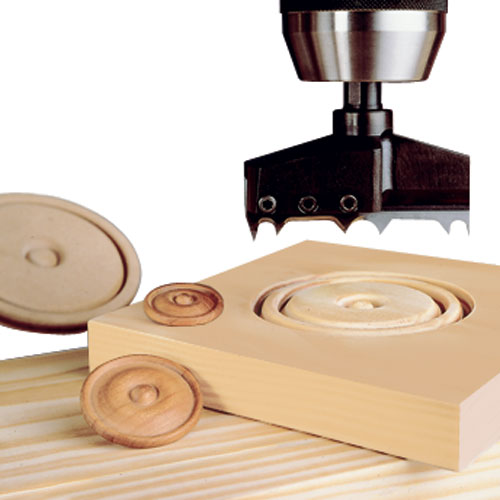

A circular shaped decorative moulding often used at the corner joints of fireplaces and in cabinet making. Best produced using a purpose-made drilling tool Fixed in a pillar drill.
Roughing Out
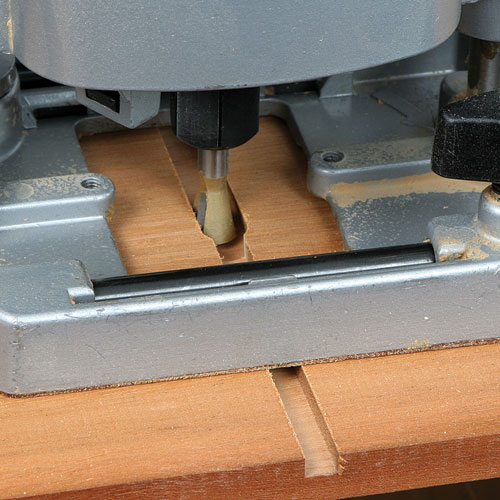

Quickly removing the bulk of the waste prior to the finishing cuts. Here a straight cutter is used to remove the bulk of the material prior to making a single pass with a dovetail cutter for a dovetailed housing joint.
Round-over Cutter
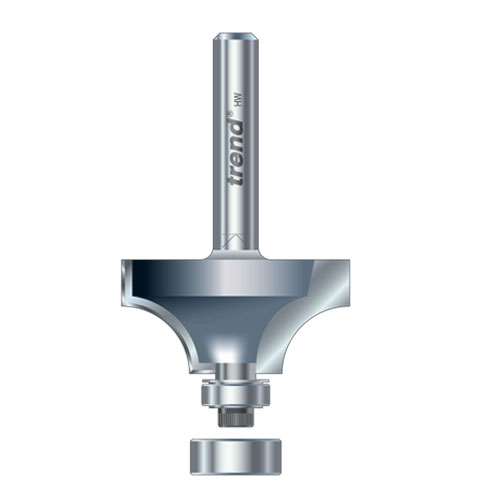

One of the several round forming cutters which convert square edges, ends and corners of a board to a convex radius.
Router Table
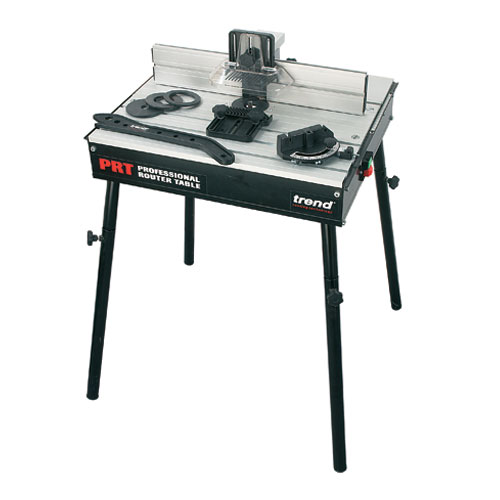

Any routing system where the router is mounted in a Fixed position and the operator does not manually handle the router. Often provides a safe and accurate means of moulding or profiling workpieces.
Sacrificial Support Strip
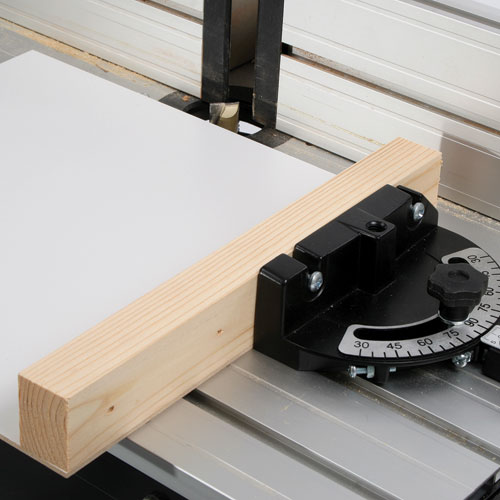

A waste batten clamped onto the work that is cut into to prevent break-out at the end of a cut.
Sacrificial Work Pad
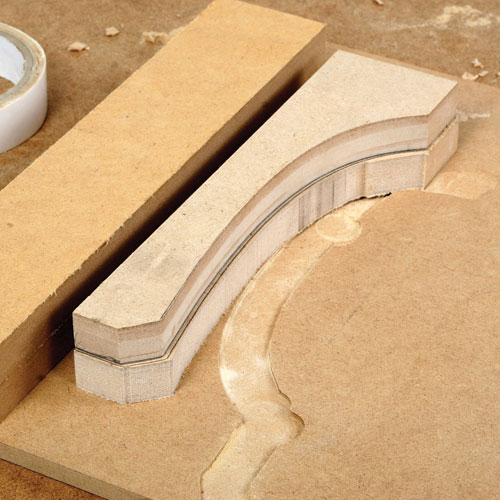

A waste board placed under the work.
Scalloped
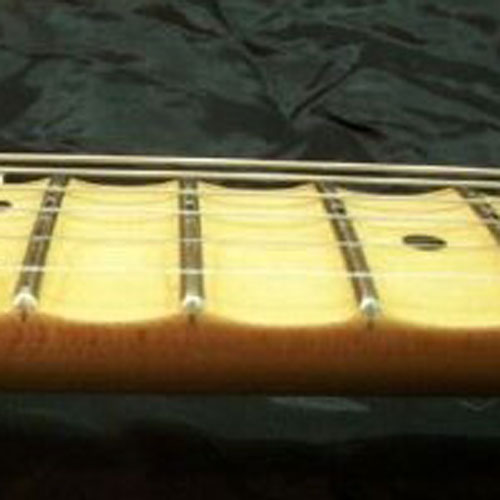

Cut-outs made in a series of regularly spaced circular scoops.
Self-guiding Cutter
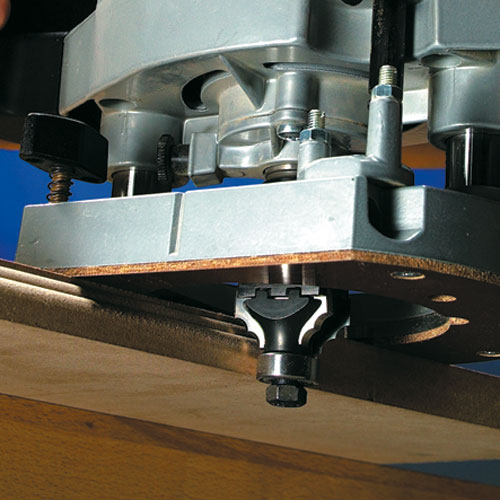

A cutter with a guide bearing or pin which rides against the edge of a workpiece or pattern to limit its horizontal depth of cut. A bearing guide can be mounted on the end of a cutter or on the shank.
Shank
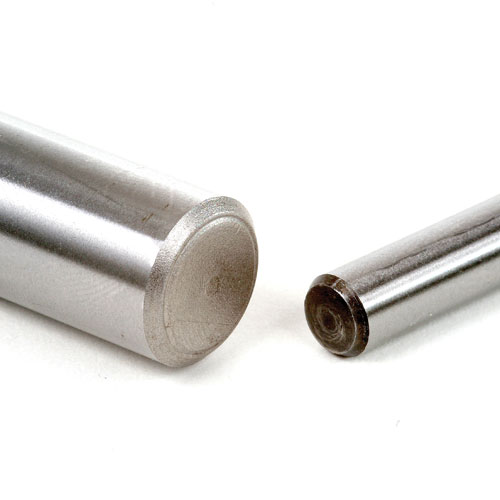

The rounded shank of a cutter clamped into the router and held there by the collet.
Shoulder Cut
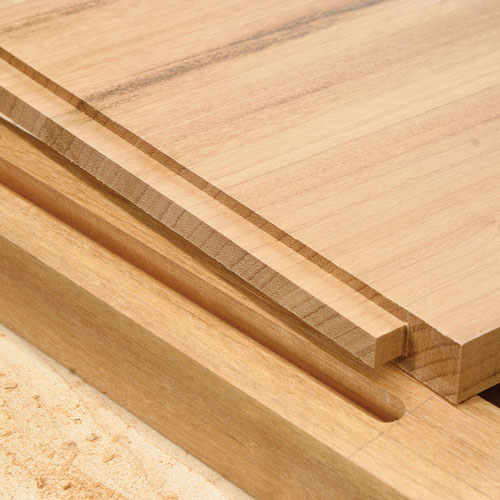

The cross-grain cut made on a joint like a tenon or lap joint.
Ski Supports
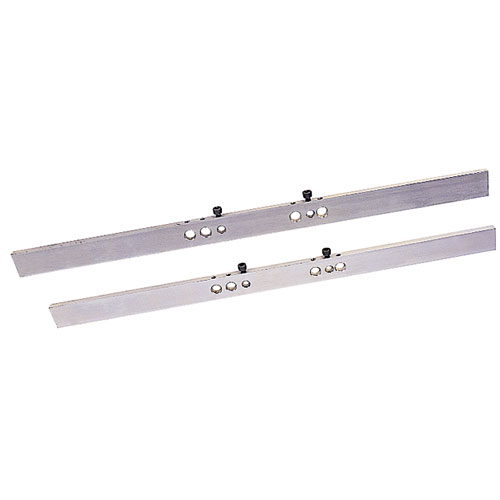

Supports that are attached to the router base used to control the router over small or uneven surfaced work-pieces.
Slotter
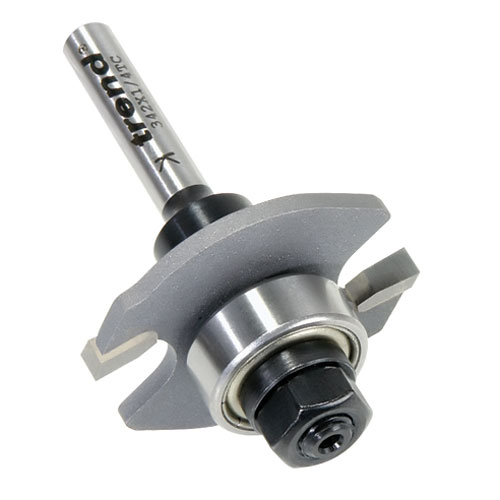

A cutter designed to produce slots in timber. Often used with a bearing guide.
Snatching
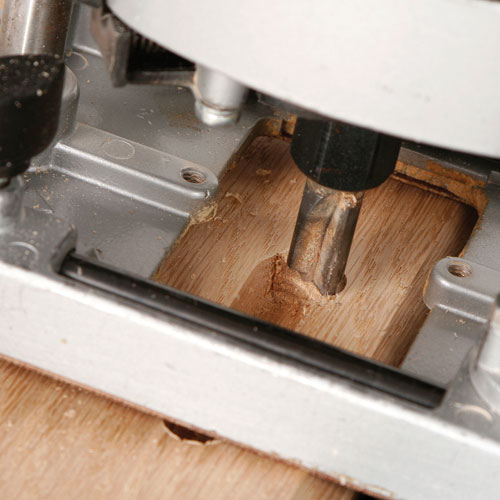

When the revolving cutter picks up the work and tries to throw it off sideways, caused by touching the work whilst the cutter is revolving too slowly.
Softwood
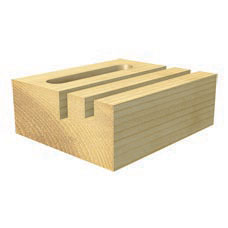

A term used to describe the physical hardness of various woods with low-to-medium impact resistance. Also woods from coniferous or needle-leaved trees.
Sole Plate
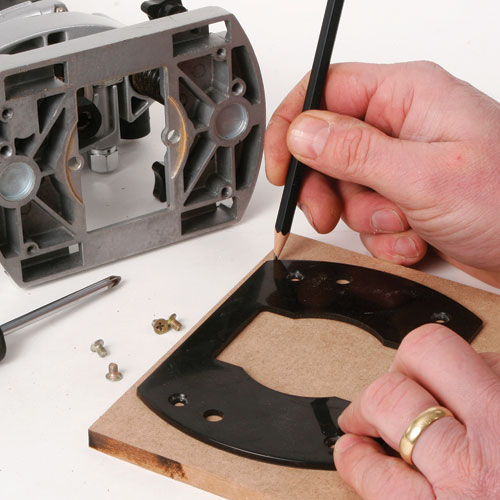

Removeable wearing surface covering the base of the router. Also a timber sleeper in which a timber construction is built onto.
Spelch Block


A waste batten clamped onto a workholder that is cut into to prevent break-out at the end of a cut. Also known as a sacrificial support strip or sacrificial piece.
Spelching
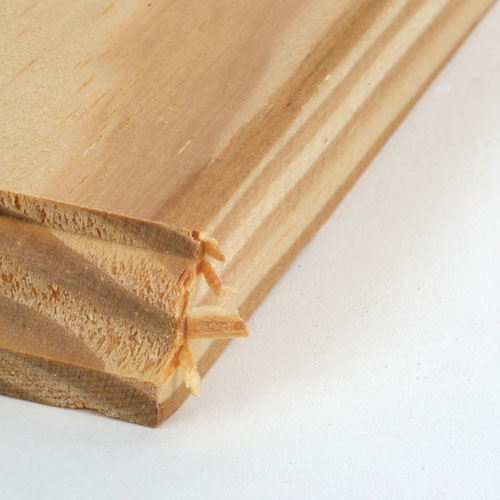

Damage at the end of a cut where the unsupported grain breaks away.
Spike
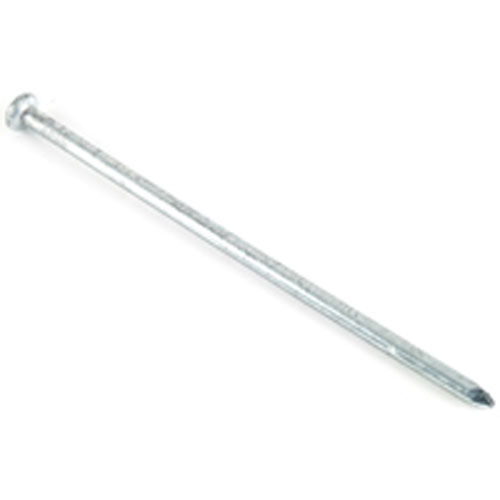

A large nail, usually more than 4Ó (102mm) long.
Spindle
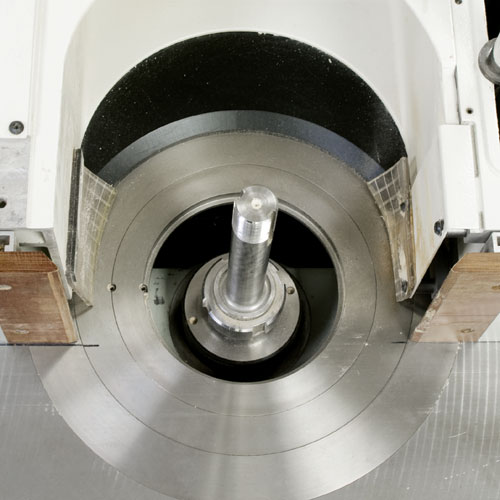

Main shaft of the router or spindle moulder with the collet on the end.
Spindle Lock
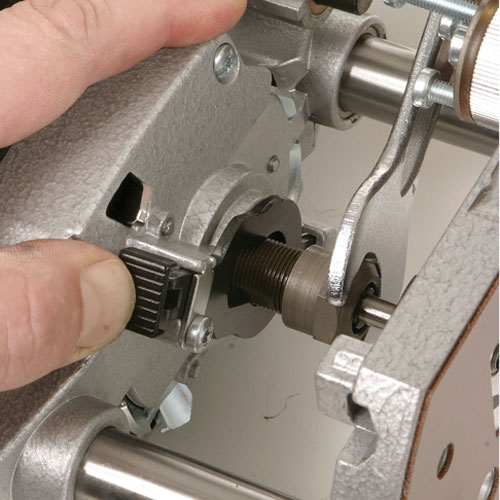

A device on the router shaft or collet that prevents rotation while installing or changing cutters. It enables one spanner only to engage this collet nut, when changing the tool.
Spiral Cutter
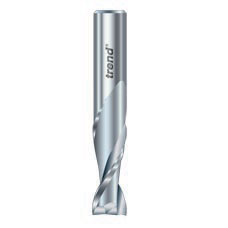

A special type of router cutter with helical or spiral cutting edges and grooves (flutes). Available with left hand fluting or right hand fluting to help raise chips out of the work.
Staff Bead
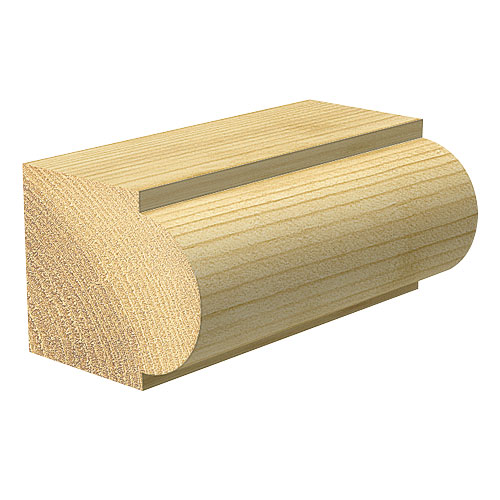

A return bead with a quirk at each side. Refers also to the beaded strip which holds a sash window in place.
Stiles
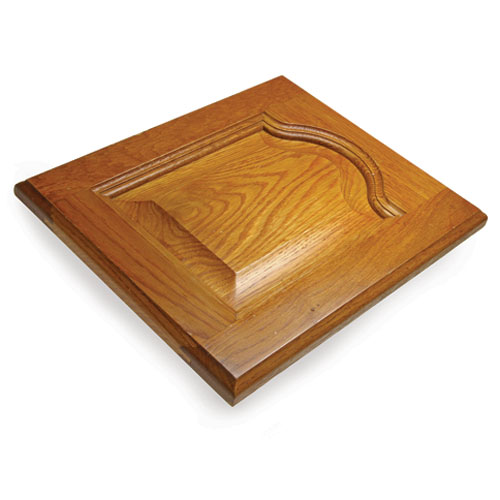

The outer vertical members of a door or window.
Stopped Housing
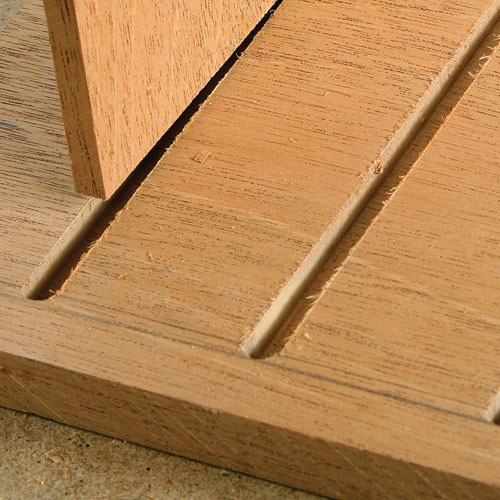

A housing that does not run across the full width of a panel or workpiece.
Straight-edge Guide
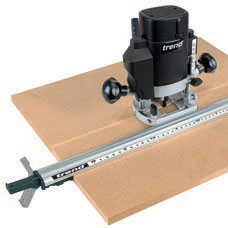

An accessory for guiding routers, circular saws and jigsaws in a continuous straight line.
String
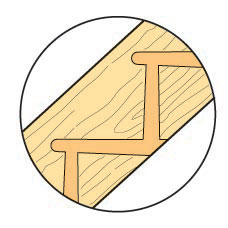

One of the inclined members of a stair case into which the treads and risers are fitted.
Stringings
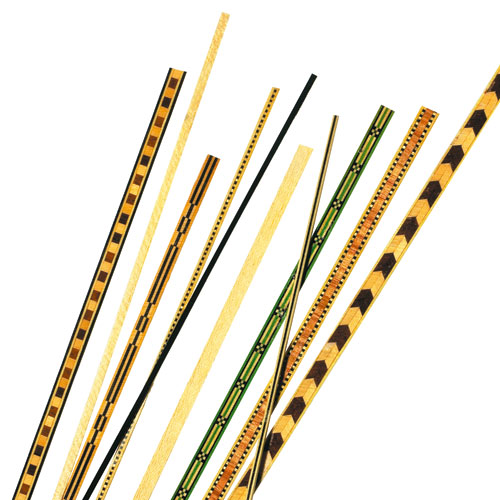

Fine decorative inlays in the form of fine lines.
Stub-tenon
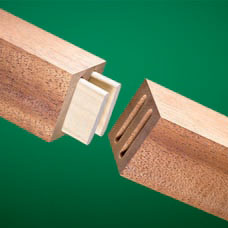

A small tenon which does not go completely through the timber.
Sub-base
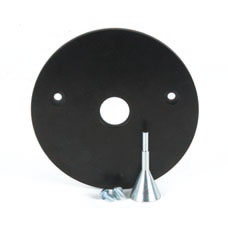

A secondary additional base fitted under the base of the router. This may be introduced to increase bearing surface, or provide a means of guiding the router in various ways.
T-halving Joint
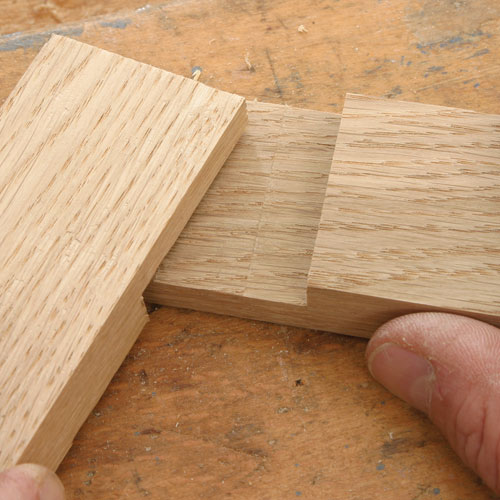

A joint where one member crosses the middle of another at right angles, material being removed from both pieces such that the surfaces finish flush.
TCT


Tungsten Carbide Tip or Tipped. These are cutting faces on routing or enginerring tools normally brazed onto a tool body. Harder wearing than traditional WS or HSS tools. For woodworking use they are deal for man-made boards.
Template
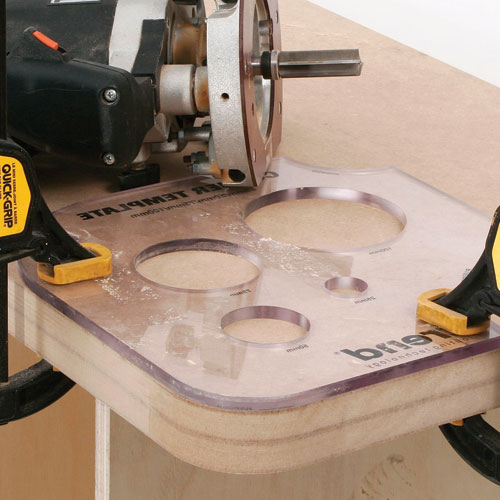

Predetermined shape that acts as a guide for forming shapes using a router with either a guide bush or roller bearing.
Template-following Guide
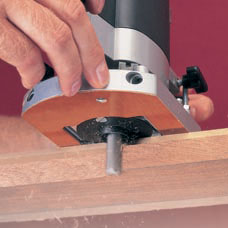

Either a roller bearing or circular guide bush used to guide the router around a predetermined shape or pattern.
Tenon
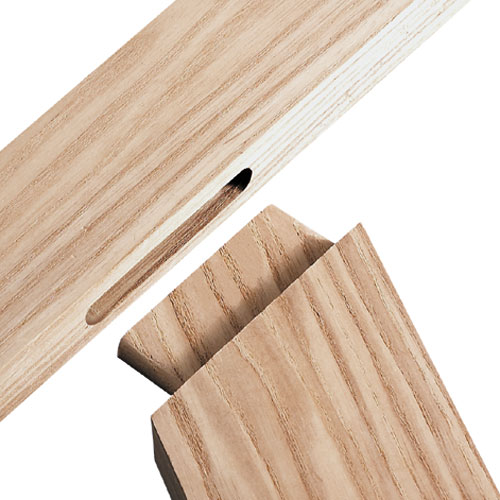

Male part of joint, often rectangular but varies, traditionally width of the tenon was a third of work piece. Tenon length equals mortise depth, tenon width equals mortise length and tenon thickness equals mortise width.
Through Dovetails
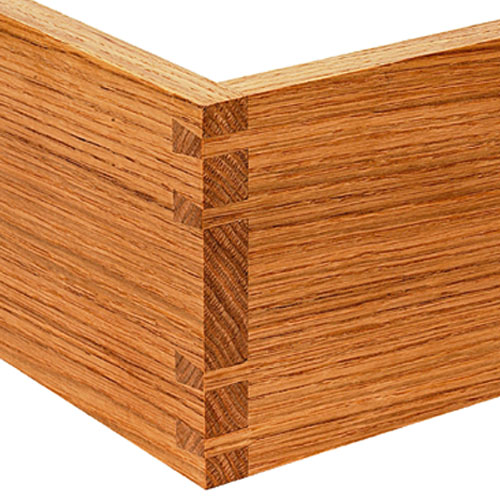

A right angled joint where the pins and tails of the joint are exposed on both faces.
Through Housing
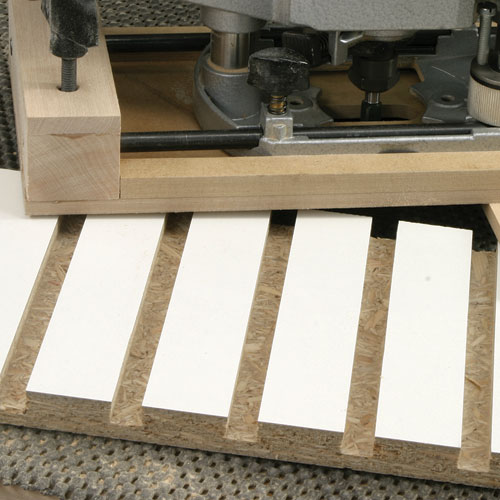

A slot across the width of a workpiece to receive, for example, a shelf.
Tongue and Groove Joint
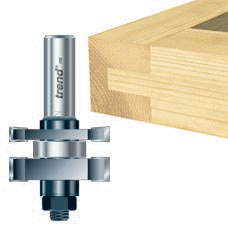

A conventional means of jointing in wood flooring and panelling. Male and female form interlocking joint along edges.
Torus
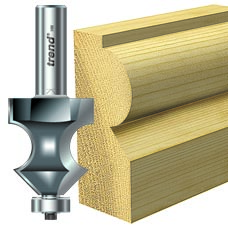

A convex moulding of approximately semi-circular section, generally used on skirting and architrave.
Trench
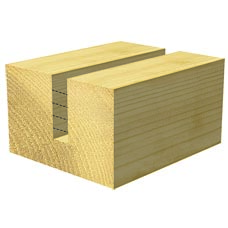

A channel or housing across the grain. Also can be called a 'dado' .
Tufnol™
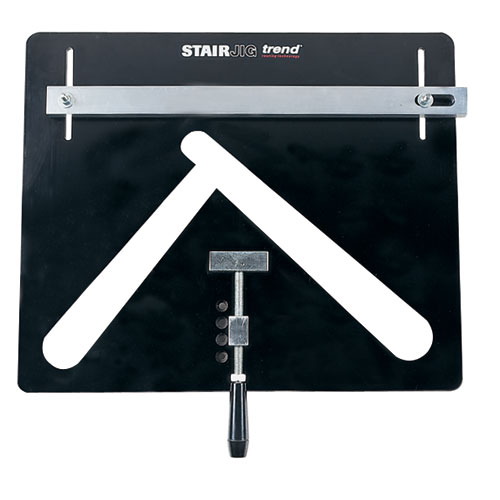

A man-made plastic type material ideal for template making.
Tungsten Carbide


This is a metal found in a number of minerals, but chiefly in wolframite. In colloidal form it is used in the filaments of lamps. As tungsten carbide it is used in a wide variety of cutting tools to give them long cutting life.
Up-cut Shear


A straight bit with the cutting edges inclined slightly so that they lift the swarf clear of the cut.
Veiner


A very fine pointed cutter used for engraving or letter cutting.
Veneer


A thin sheet or layer of sliced wood, glued or bonded to a surface, usually wood or man-made board; a decorative covering.
Weight Pocket


A small square section of timber cut into the lining of a box sash window to allow access to the sash weights.
Weld back


Fusion of the hot swarf behind the cutter when machining materials such as acrylic. Depending on the material being cut a coolant can be used to reduce weldback., such as wax lubricant, oil/air mix or air line.
Workboard


A specially adapted board with a variety of built in mechanisms for holding the work.
Workpiece


This is the board or component which is to be worked, machined, drilled, sanded, or routed.
Worktop


The suface of a table. Often referring to worktop used in a kitchen. This is sometimes called Postformed Worktop due to its curved edge. Special jigs are available for routing kitchen worktops to ensure a seamless joint.
